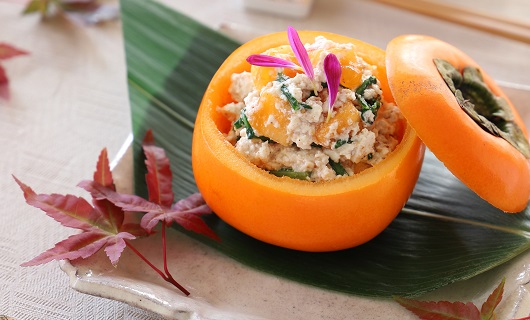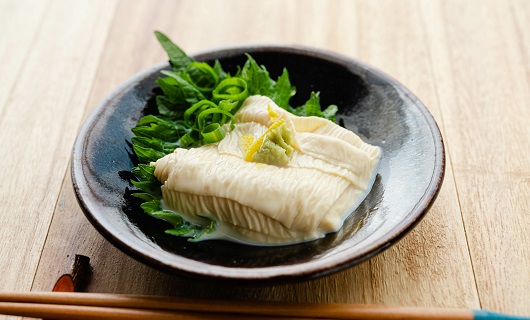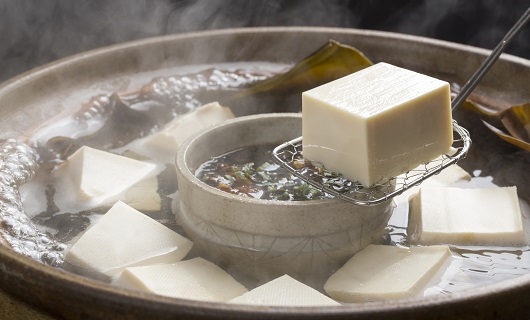
Shira-ae - mashed tofu salad
The rich aroma and taste of tofu made from domestic soybeans, and the white sauce mixed with seasonal Kyoto vegetables and dishes are rich in flavor and smooth on the palate, making it an essential dish for Obanzai. By mixing it with your favorite ingredients, it is possible to create your own original dish. We offer an unique "Shira-ae" that matches your taste, not just a garnish for your main dish.

Yuba - the tofu skin
"Yuba" is one of the most famous ingredients in Kyoto, a city that has long flourished as a center of political and cultural life, and was introduced to Japan in the Kamakura period as a vegetarian dish. At that time, it was a luxury food that only nobles and temples were allowed to eat. Later, Yuba was used in Zen Buddhist temples as an ingredient to be served to pilgrims, and together with Chakaiseki and Kyo Cuisine, Yuba has become a valuable ingredient in the transmission of culture. In recent years, Yuba has been attracting attention as a health food, with its high content of soy protein, fat and minerals, and dishes made with Yuba are popular for their deep traditional Japanese flavour and very delicate texture.

Yudofu - boiled tofu
Nanzenji Temple in Kyoto is said to be the birthplace of "Yudofu". It is believed to have originated as a teahouse dish served in front of the Nanzenji temple. "Yudofu" is a very simple Kyoto dish, so the rich taste of tofu made from domestic soybeans, as well as the natural flavour of the ingredients such as Kyoto's famous water and Rishiri kelp soup stock stand out. If you add yuzu to the accent, it will give even more dimension to the dish. We offer you a simple but profound taste of Kyoto's Yudofu.

Dengaku
At the end of the Heian period, tofu was introduced from China and "Dengaku" was created by skewering tofu square pieces onto wooden skewers and baking it. It is also known as "Dengaku-yaki" or "Miso-dengaku". Later, in the Muromachi period, with the introduction of the mortar and pestle, the sweet flavour of miso was popularised by mixing miso with kinome leaves and yuzu. The naming comes from "Dengaku Mai", a custom in the Heian period of worshipping the god of the rice field and praying for a good harvest when planting rice. The name comes from the resemblance of white tofu skewered on a stick to the Dengaku dancer who wears white hakama and dances on stilts with one leg. Today, there are many different flavours of tofu in different regions. Here we offer you a dish distinctive to Kyoto.
